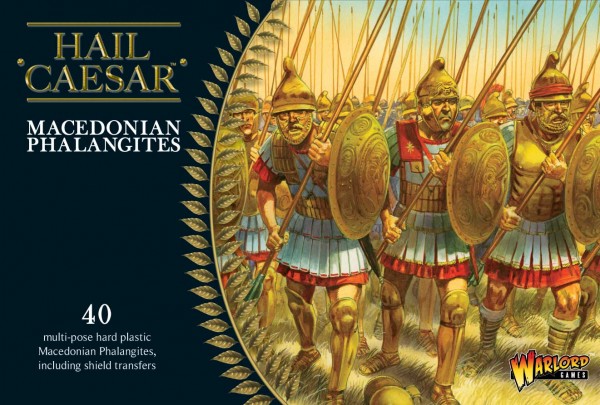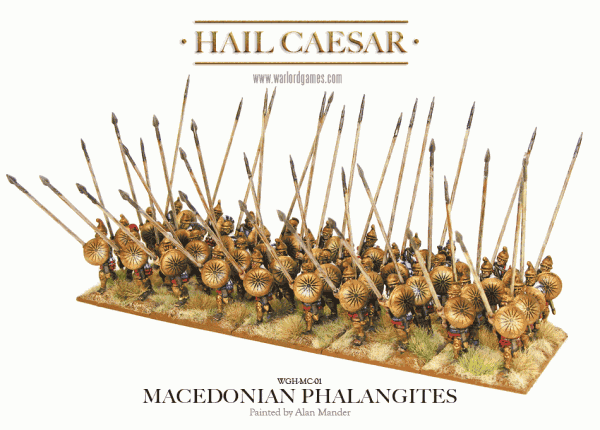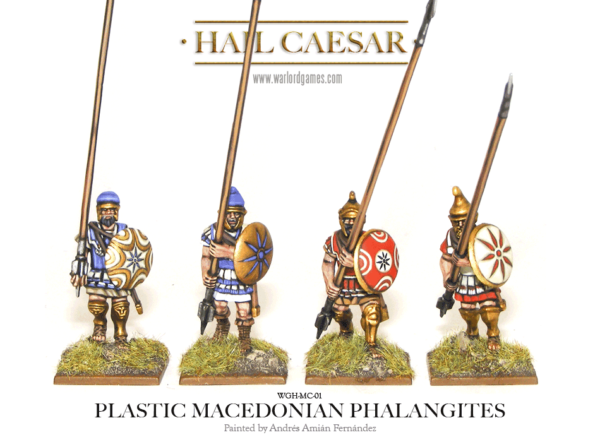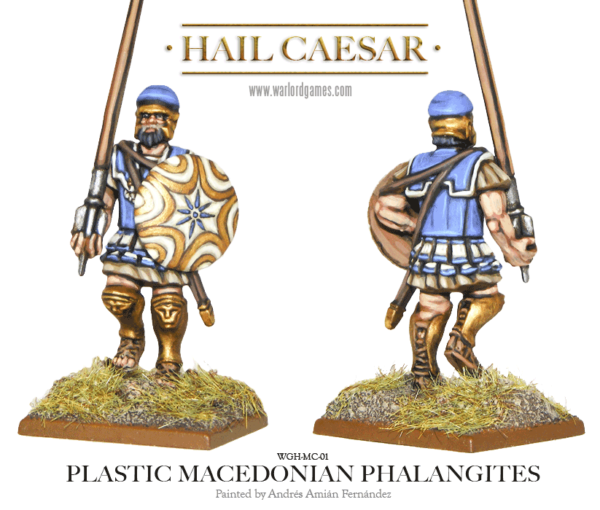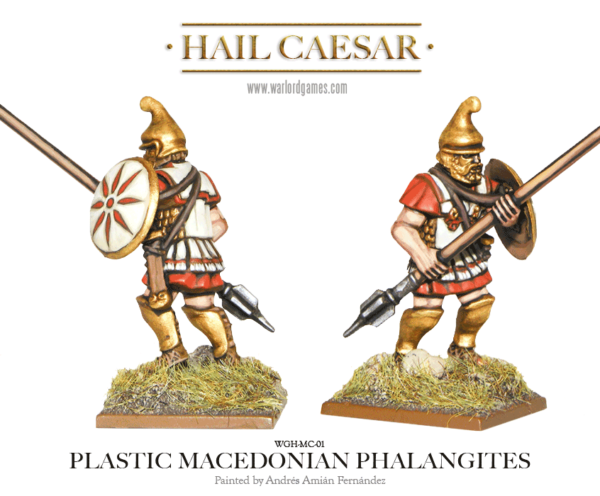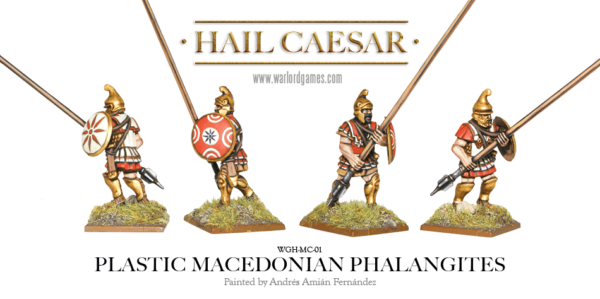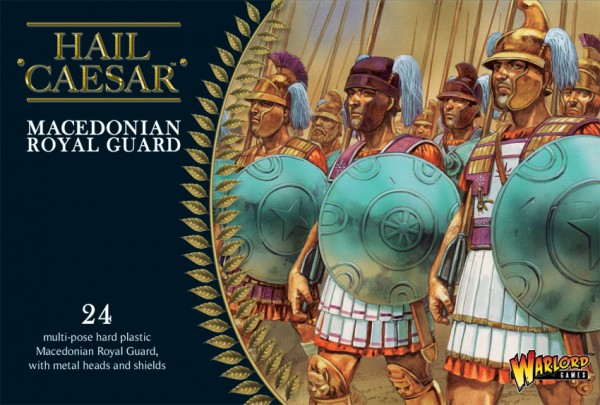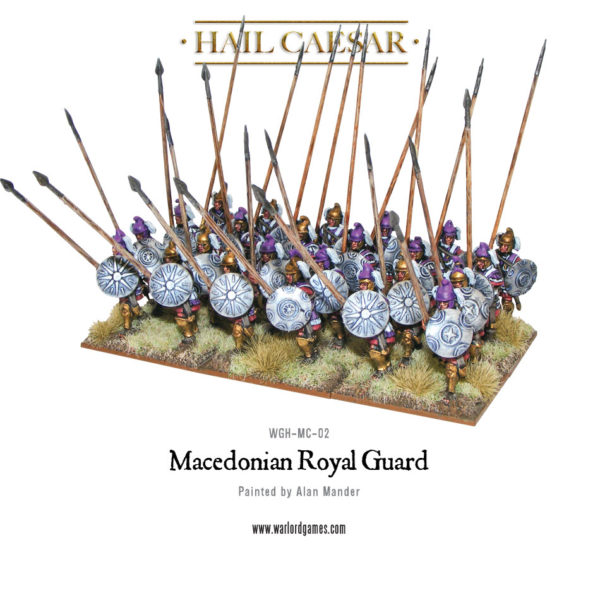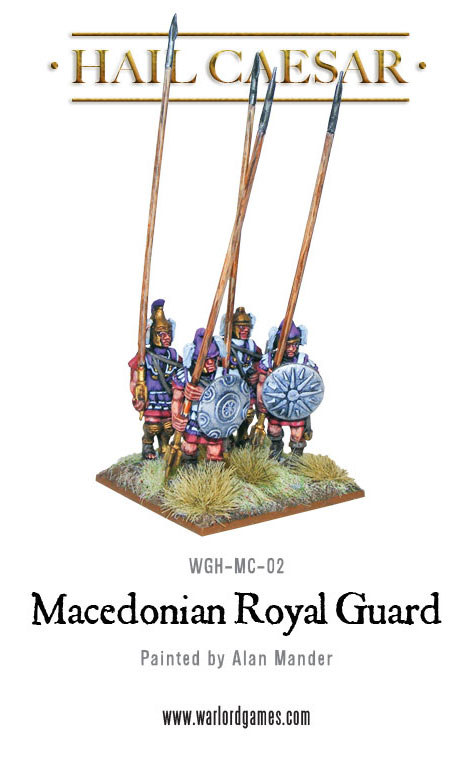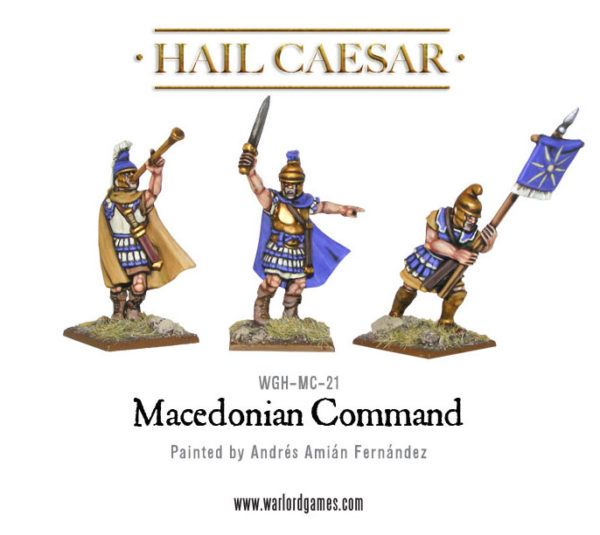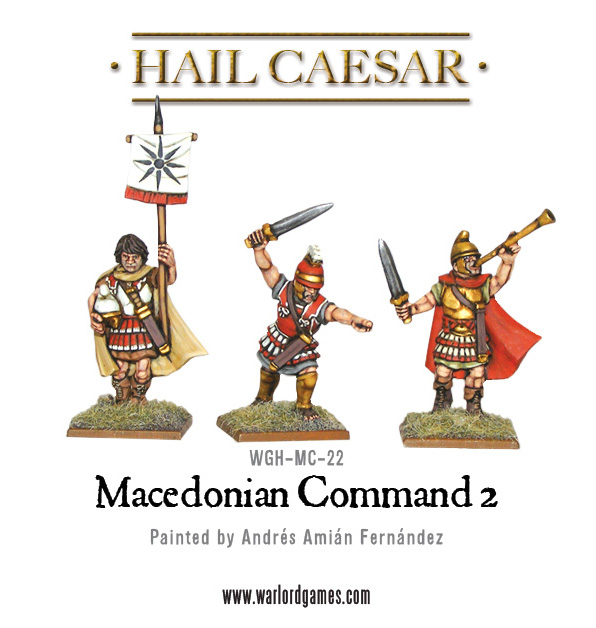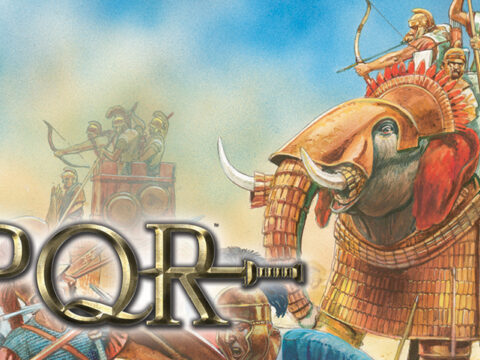One of the finest sights in wargaming are the serried ranks of pike that fill Macedonian armies (and those of several other armies in the period). Our amazing plastic phalangites can be found here!
Philip II, father of Alexander the Great, spent much of his youth as a hostage at Thebes, where he studied under the renowned general Epaminondas, whose reforms were the basis for the phalanx. Phalangites were professional soldiers, and were among the first troops ever to be drilled, thereby allowing them to execute complex manoeuvres well beyond the reach of most other armies.
They fought packed in a close rectangular formation, typically eight men deep, with a leader at the head of each column and a secondary leader in the middle, so that the back rows could move off to the sides if more frontage was needed.
Each phalangite carried as his primary weapon a sarissa, a double-pointed pike over 6m (18 feet) in length. Before a battle the sarissa were carried in two pieces and then slid together when they were being used. At close range such large weapons were of little use, but an intact phalanx could easily keep its enemies at a distance; the weapons of the first five rows of men all projected beyond the front of the formation, so that there were more spearpoints than available targets at any given time. The secondary weapon was a short sword.
The Macedonian phalanx was not very different from the Hoplite phalanx of other Greeks states, save it was better trained, armed with the sarissa enabling it to outreach its competitors and stave off enemy cavalry, and wore far lighter armour enabling longer endurance and long fast forced marches, including the ability to sprint to close and overwhelm opposing positions and archers.
In essence, the range of their counter-weighted sarissa, allowed them superior mobility as well as superior defence and attack abilities despite the encumbrance disadvantages of the longer weapon once trained up to handling it in formation.
Centuries later, the Canton organised militia of Swiss Pikemen enjoyed similar advantages over less well trained contemporary militaries which were identically equipped, which emphasises the importance of training and unit cohesion in the scheme. In Phillip’s and Alexander’s time, the Macedonian phalanx had clear technical superiority.
The new plastic boxed set contains 40 multi-pose plastic Macedonian Phalangites and a sheet of waterslide shield transfers. The miniatures are simple to build with just an arm, head and shield to add to the main body. There are several arm and head options so you can build the regiment to your own tastes. At just £20 this provides superb value for money.
In our Macedonian range we also have the Royal Guard! Silver Shields, White Shields and Brazen Shields – all elite hypaspist regiments that can be represented on the tabletop.
The Macedonian phalanx was one of the world’s greatest bodies of fighting men, and the best of them were amongst the very finest soldiers ever to march upon a battlefield. Under Alexander they conquered the known world and under his Successors they fought over the spoils of Empire.
One of the Macedonian army’s most decorated units, the Silver Shields (Argyraspides) served under Alexander the Great, their name derived from the silver-plated shields they bore. Chosen men, armed with the deadly sarissa pike, they were both feared and revered due to their long service and skill at arms. Following Alexander’s death in 323 BC, the Silver Shields followed the Thracian general Eumenes, in support of Alexander’s son. They infamously delivered their general to their enemy, Antigonus, after their baggage train containing 40 years worth of loot and their families was captured during the Battle of Gabiene in 316 BC. Antigonus duly rewarded them with service in Afghanistan and suicide missions – nobody likes a traitor!
The Antigonid phalanx was divided into two separate and distinct corps – the Brazen Shields (Chalkaspides) and the White Shields (Leukaspides). The troops in these divisions were, much like Alexander’s Royal Guard, picked men. Thracians and other ‘barbarians’ were rewarded with land in return for servitude in the phalanx. Unlike Alexander’s phalanx, the Antigonid Royal Guard units formed a larger percentage of the overall army strength, with over half of the army being formed from their strength in more than one battle.
This boxed set gives you everything you need to field one of these famous units. All you need to do is to paint their shields silver, bronze or white!
You can add these elite units to your army from our webstore here as well as the command groups you can see below.
Check out our full Macedonian range here, rumour has it that their fabled leaders will be joining them very soon…

